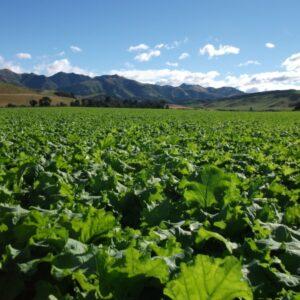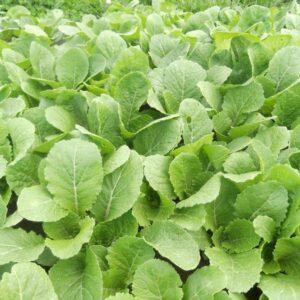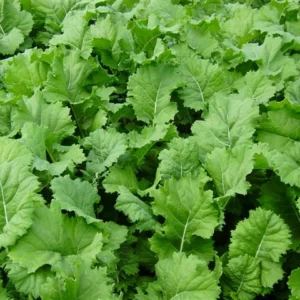Drover Plantain
Home » Shop » Chicory and Plantain » Plantain » Drover Plantain
Drover Plantain is characterised as having an erect growth pattern and a large leaf. It is known as being a great performer with year-round production.
$16.25 – $22.25Price range: $16.25 through $22.25 excluded GST
Description
A suitable cultivar for dry climates with good drought tolerance. Drover Plantain also establishes well after planting.
Environmental benefits – Plantain is recognised as a nitrogen-leaching mitigation option by regional councils in Canterbury, Horizons and Bay of Plenty. ECan has information on how to get credit for using plantain to nutrient limits in areas where nutrient rules are in place. The amount of leaching reduction achieved depends on your farm’s soil, climate, and farm system setup. With pastures containing a 30% Plantain composition, Overseer nutrient modelling has shown between 7-20% reductions in nitrate leaching.
Additional information
| Treatment | DYNASTRIKE, GOLDSTRIKE, UNTREATED |
|---|---|
| Drover Plantain | 100% |
Cultivation
Plantain can be managed on a similar rotation length as perennial ryegrass, making it a good fit for most farm mixes.
Specialty crops – pure plantain and plantain clover mixes, will be improved when the first grazing occurs at the 6-8 true leaf stage. Future grazing’s are best between 18 and 25 days from spring to autumn when plantain reaches 25 cm in height.
In a grass mix, it is recommended to graze as soon as plants pass the pull test and before the plantain (and clover if planted) will be affected by shading from other species, around when plantain has two true leaves. For the second grazing in a mixed sward, graze when the plantain plant has 6 true leaves.
Grazing tip: Palatability of the seed head declines from around 18 days after emergence. If many seed heads are left in the pasture, they can be topped to improve future quality and palatability. If grazing animals reject the plantain feed it may need to a reset by topping as animals will not eat this rejected material.
Key seasonal management decisions
Late Spring/Summer
• Topping may be necessary in December after seed head and again in the autumn to reset quality feed.
• Plantain can be grazed frequently in summer if moisture is not limiting, due to higher temperatures.
Autumn
• Rotation length only needs to be extended by 3-5 days in late autumn.
• In autumn, plantain can suffer from insect attacks such as porina or plantain moth.
Winter
• Over winter, in a mixed pasture, watch that plantain is not overgrazed as dictated by other species with higher winter growth rates than plantain.
• For specialty plantain stands, the rotation over winter can be extended to 40 days+ grazing (depending on winter soil temperatures) with slower growth and taking longer to reach 25 cm grazeable height.
Sowing rate
Recommended sowing rate of 1 -2 kg per hectare in a mix.
As a specialty crop 6 – 8 kg per hectare.
Plantain cultivars establish best when sown into warm soils (10-12°C) at no greater than 10mm depth and where there is little competition from other plants in the first three months.
Spring sowing is recommended as plants establish quickly.
Early autumn sowing can result in a successful establishment, but plants develop slower, late autumn sowing is not advised.
Establishing plantain into an existing sward
The best sowing method is direct drilling, with a maximum plantain content of between 15 and 30% of the pasture DM being achieved.
Plantain can be direct drilled into low cover (after hard grazing) and early grazing after sowing while seedlings are small enough to avoid defoliation is recommended to aid establishment.
Price table
| Treatment | 500 kg + | 100 – 500kg | 10 – 100kg |
|---|---|---|---|
| Untreated | $14.25 | $14.75 | $15.70 |
| Dynastrike | $17.25 | $17.75 | $18.70 |
| Goldstrike | $20.25 | $20.75 | $21.70 |
All prices are excluded GST. Minimum order 10kg.
Related products
-

Goliath
$26.50 excluded GST/kg This product has multiple variants. The options may be chosen on the product page -

Hunter
$17.75 – $23.75Price range: $17.75 through $23.75 excluded GST This product has multiple variants. The options may be chosen on the product page -

Spitfire
$17.95 – $23.95Price range: $17.95 through $23.95 excluded GST This product has multiple variants. The options may be chosen on the product page
